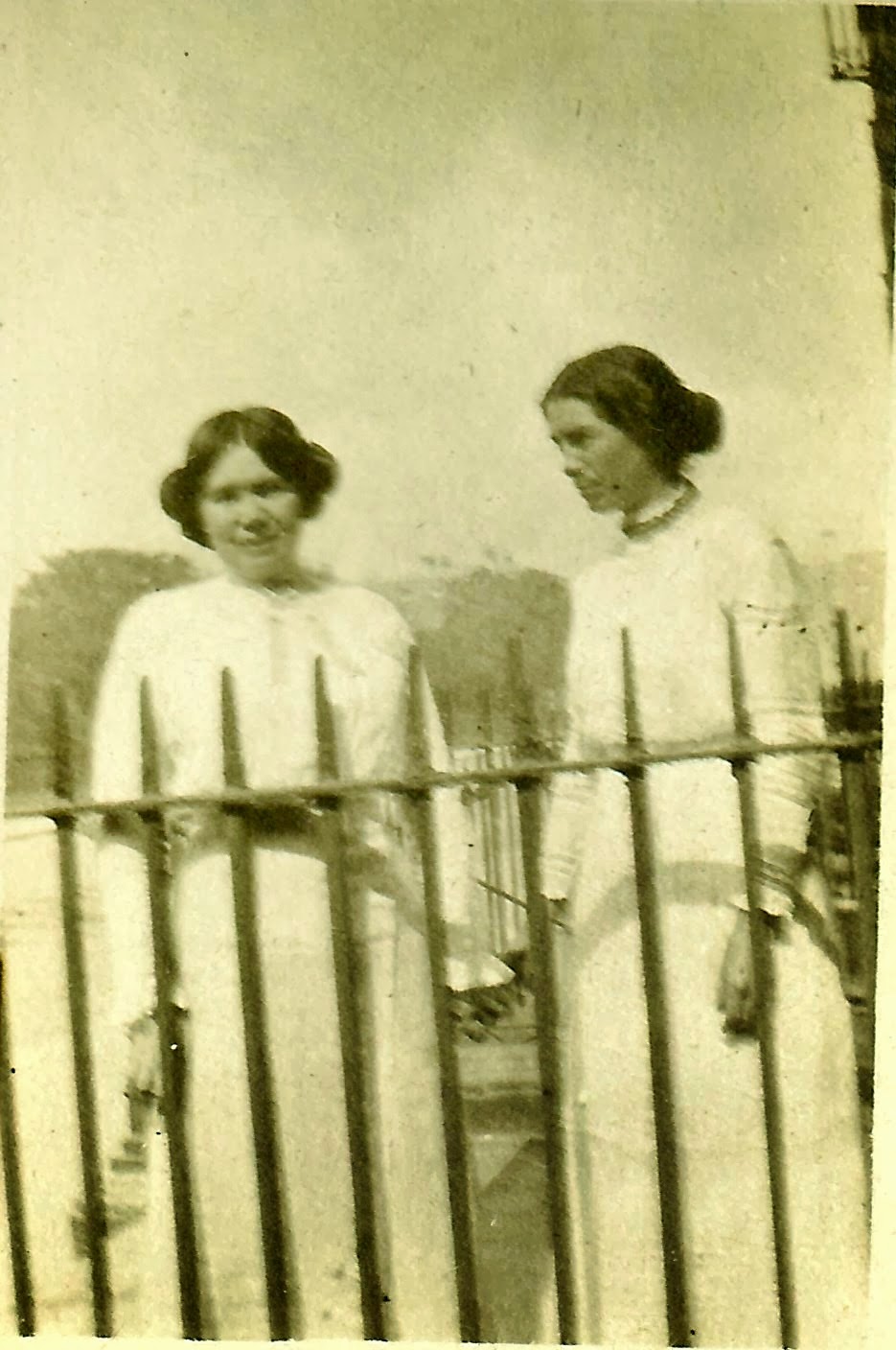Benita (McGinnis) McCormick
(1889 – 1984)
How appropriate that this unidentified cousin is standing in front of a stark, cold brick wall.
 |
| Mystery Cousin, what is your name? Photo from Benita (McGinnis) McCormick’s scrapbook. Taken outside Mountjoy Prison between July and August, 1913. |
Ironically, though I don’t know the man’s name, I can tell you where that brick wall is and why he was standing in front of it.
You see, this unnamed cousin was the “chief” of Ireland’s largest and best known detention center: Mountjoy Prison. My great-aunt “Detty,” Benita McGinnis, spent time with him and his family during her trip to Ireland in the summer of 1913.
Not only is this tall somber man’s identity a mystery to us, but so are the subjects of the other photographs here, all of which appear on the same page in Aunt Detty’s scrapbook. However, there are a few clues that might help solve the puzzle, at least where he is concerned.
Mountjoy Prison, located in the center of Dublin, was built in 1850 by the British. It was originally intended as a stopping place for prisoners sentenced to the penal colony of Van Dieman’s Land (present-day Tasmania). It housed James Larkin, leader of the Irish workers’ strike, and a few years later, some of the leaders of the Irish War for Independence, ten of whom were executed and buried there.
On a lighter note, you can listen to a recording of a song about the prison, “The Mountjoy Hotel,” written by one of its former “guests” by clicking here.
Based partly on what we believe, namely that Aunt Detty and some of her cousins made a pilgrimage to Croagh Patrick in late July; and what we know for sure, which is that she left for America on August 19, 1913; we can conclude that she visited Dublin sometime between July and mid-August of that year.
What makes her visit to Dublin during this time period so interesting is that it was on the eve of the Dublin Lockout and the subsequent Bloody Sunday. The lockout began on August 26, 1913, after the Irish union transport workers, seeking higher wages, halted tram service on Dublin’s O’Connell Street. The owner of the tram service locked out the workers, who had refused to leave the union, and other employers followed suit in the days that followed.
The actions precipitated a riot on Sunday, August 31, with two people killed and over 300 people injured. The lockout continued for the next six months, resulting in some 20,000 men and women losing their jobs, pitting social classes against each other, and calling the questions of equality for all and better living conditions for the working class.
At the time of these events, our Mystery Cousin served as “Chief” of Mountjoy. But what exactly did a “chief” do?
 |
| “Housekeeper of Mt. Joy Prison, where my cousin was chief,” reads the caption in Benita’s scrapbook. Photo taken between July and August, 1913. |
Initially, I thought it meant that he was the head of the prison, but now I doubt that, as the heads of the Irish prisons are referred to as “governors.” A number of internet sites about the Irish prisons contain references to positions with the word “chief” in them. One of them is “Chief Warder.” A warder is a prison guard. This would seem to indicate that Mystery Cousin was the head of the prison guard.
That might explain why a grinning 23-year-old Benita is sitting on a bench in the middle of two guards in the photo above. Neither of them resemble the tall man – our Mystery Cousin – in the first picture, but the bars on the windows behind them certainly indicate they are outside the Mountjoy walls.
 |
| Mountjoy Prison nurses. Photo from Benita (McGinnis) McCormick’s scrapbook, taken between July and August, 1913. |
The third photo introduces us to a middle-aged matronly woman, standing outside those same walls. She is a marked contrast to our “Chief,” dressed in a light-colored dress, a kind and slightly bemused expression on her face. One wonders whether she had stopped in the middle of her duties to appease her young American shutterbug. Under the photo, Aunt Detty wrote, “Housekeeper of Mt. Joy Prison, where my cousin was chief.” If only she had thought to add names!
In the final two photographs of the people of Mountjoy, we meet a group of four smiling nurses. They look to be in their early 20s, and they pose primly for us in starched white uniforms and bib aprons, their long dark hair tied up and tucked under their nurses’ caps. Standing behind a pointy iron fence, their youthfulness lends a softness to what must have been a harsh and formidable place. The fun-loving Benita was probably a breath of fresh air for them after a long day’s work.
 |
| Mountjoy Prison nurses. |
Ah, the stories these people could tell! Did they have any inkling of the trying times that were nearly upon them? What role would our Mystery Cousin have had in those events? Was he for or against the union’s cause? And what eventually happened to him?
I have been corresponding with officials from Mountjoy Prison and hope they can help unlock the answers to these questions. If their records do not go that far back, maybe I will be able to locate some kind soul who can research the names of the administration staff at Mountjoy in 1913.
From there, if I can put a name to Mystery Cousin, I might be able to find some of my Irish ancestors. Fingers crossed.
************
Copyright © 2014 Linda Huesca Tully
